Your Cart is Empty
Matchais a finely milled green tea powder used in both traditional Japanese tea service and modern preparation. Unlike other teas that are infused and strained, matcha is fully suspended in water — the entire leaf is consumed.
Its preparation looks simple: powder, water, whisk. But precision matters. The ratio, temperature, and motion all determine the cup’s clarity, sweetness, and texture.
This guide covers how matcha is prepared, the tools required, and the technical considerations that separate a bitter, flat bowl from a balanced one.
What Is Matcha and How Is It Made?
Matcha begins as tencha — shade-grown green tea from Japan, produced by covering plants roughly three weeks before harvest. This shading slows photosynthesis, increasing chlorophyll and amino acids (particularly L-theanine), while reducing catechin bitterness.
After plucking, leaves are steamed, dried, and de-stemmed, then stone-milled into a micro-fine powder. Each step is designed to preserve color, sweetness, and aroma — and each introduces potential for error.
High-quality matcha is vivid green and aromatic, with creamy, umami-rich body.
Inferior or stale matcha oxidizes quickly, shifting to dull olive and producing harsh astringency.
All of Hugo’s matcha lots are stone-milled tencha sourced directly from small producers in Japan.
Matcha Ratios and Water Temperature
Because matcha is consumed whole, accuracy in measurement is critical. Even small temperature or ratio changes significantly affect texture and taste.
Usucha (thin matcha)
- Use 1.5–2 g of matcha
- Add 70–80 ml of water
- Water temperature: 165–170 °F (74 °C)
- Results in a light-bodied matcha with fine foam and balanced umami
Koicha (thick matcha)
- Use 3–4 g of matcha
- Add 40–60 ml of water
- Water temperature: 150–160 °F (66 °C)
- Produces a dense, syrupy texture with low astringency
The same leaf can be used for both — the difference lies in ratio, not variety. Water above 175 °F burns amino acids and dulls aroma; cooler water can leave matcha under-extracted.
Essential Matcha Tools for Brewing
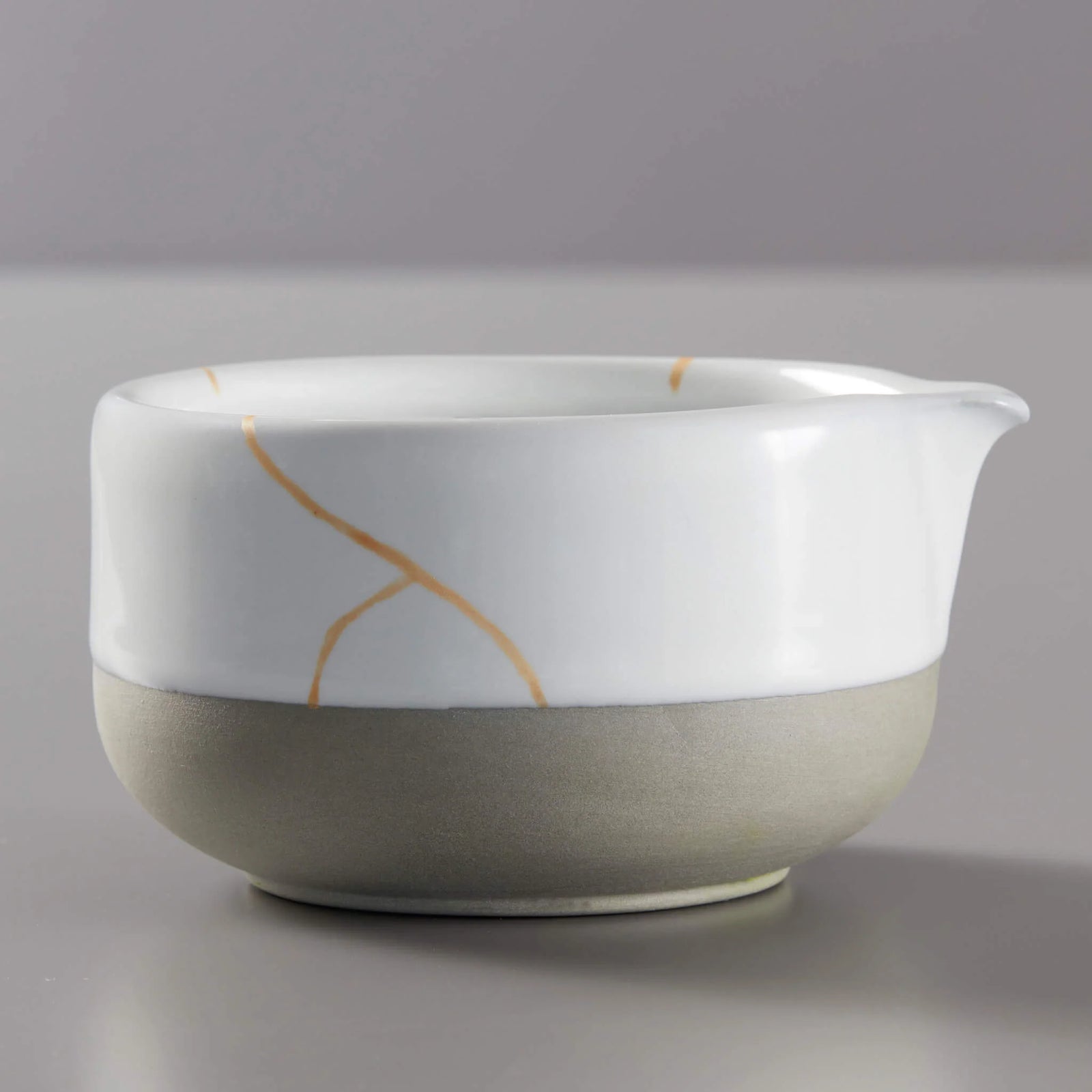
Chawan (Tea Bowl)
The wide, rounded shape of a chawan allows for proper whisking motion and aeration, helping create smooth, even foam while maintaining temperature stability.
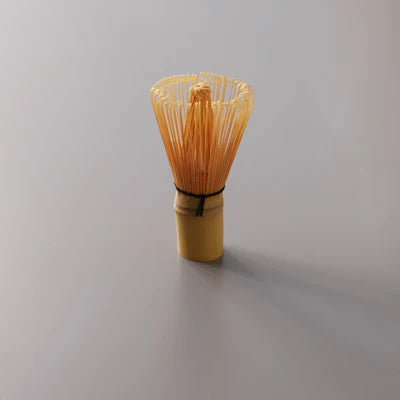
Chasen (Bamboo Whisk)
With 70–120 delicate prongs, the chasensuspends fine matcha particles evenly in water, creating a stable microfoam that defines texture and mouthfeel.
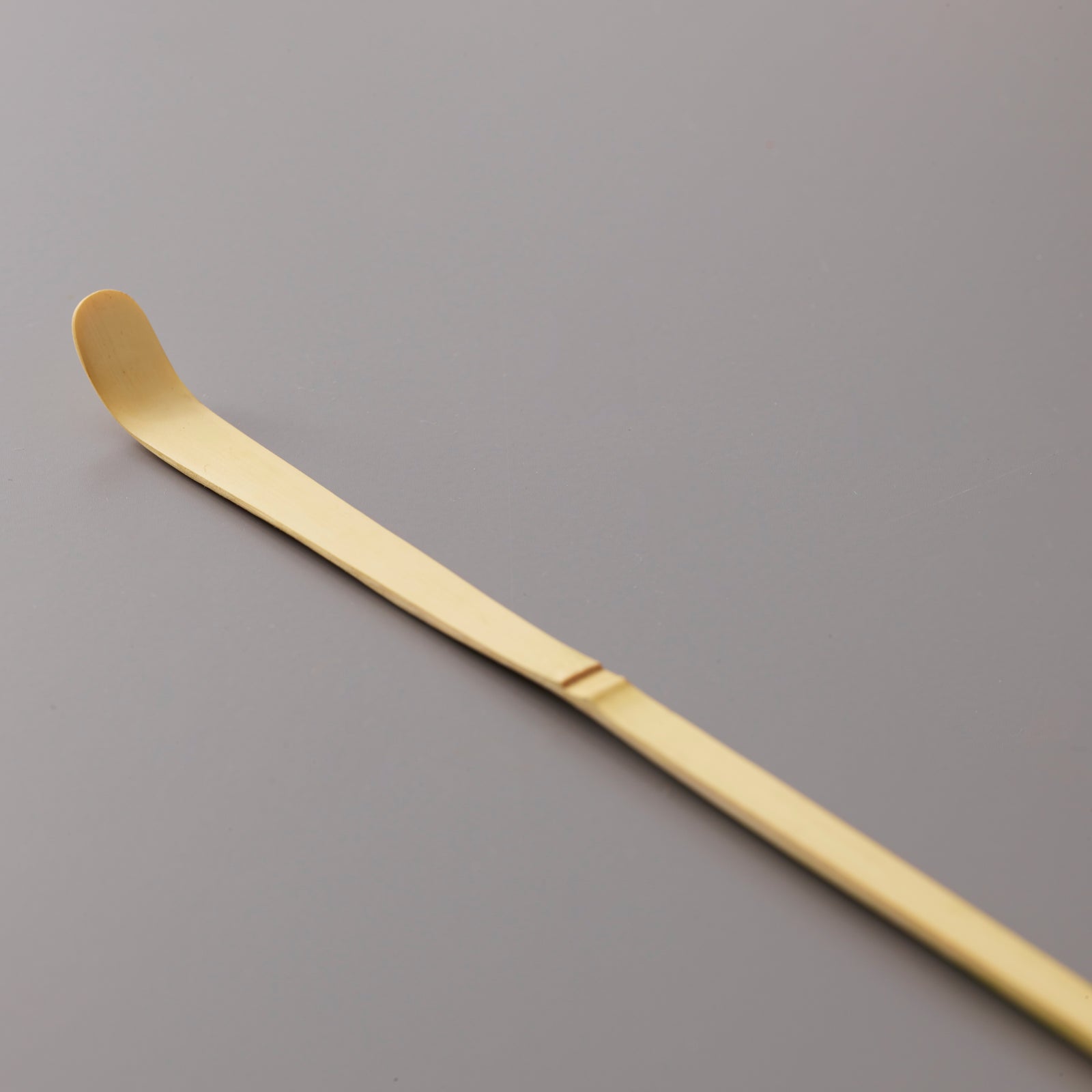
Chashaku (Scoop)
A traditional bamboo scoopthat measures roughly one gram of matcha per portion, ensuring consistency and proper dosing across brews.
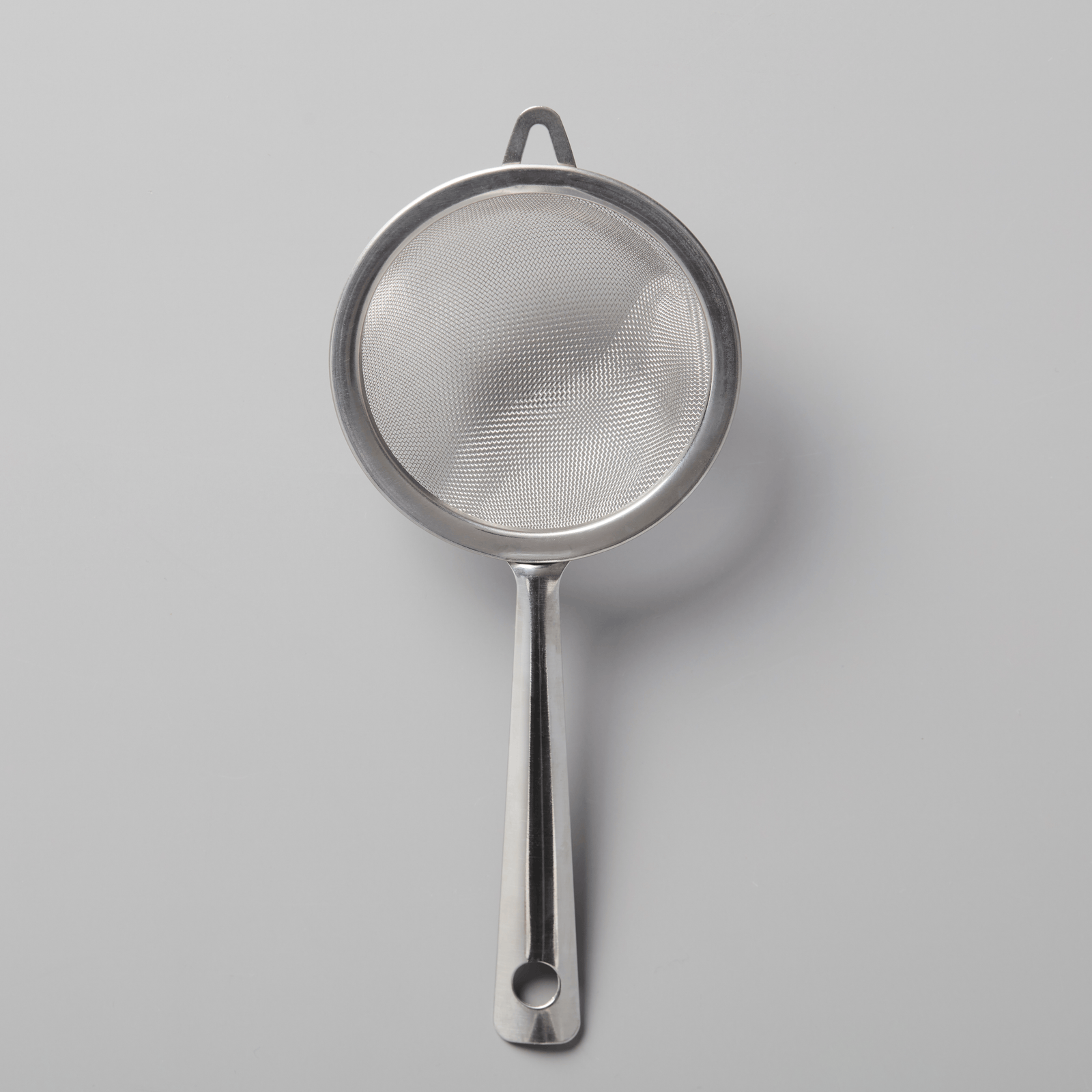
Fine Sieve
Used to sift matcha before whisking, breaking static clumps and aerating the powder for a smoother, lump-free suspension.
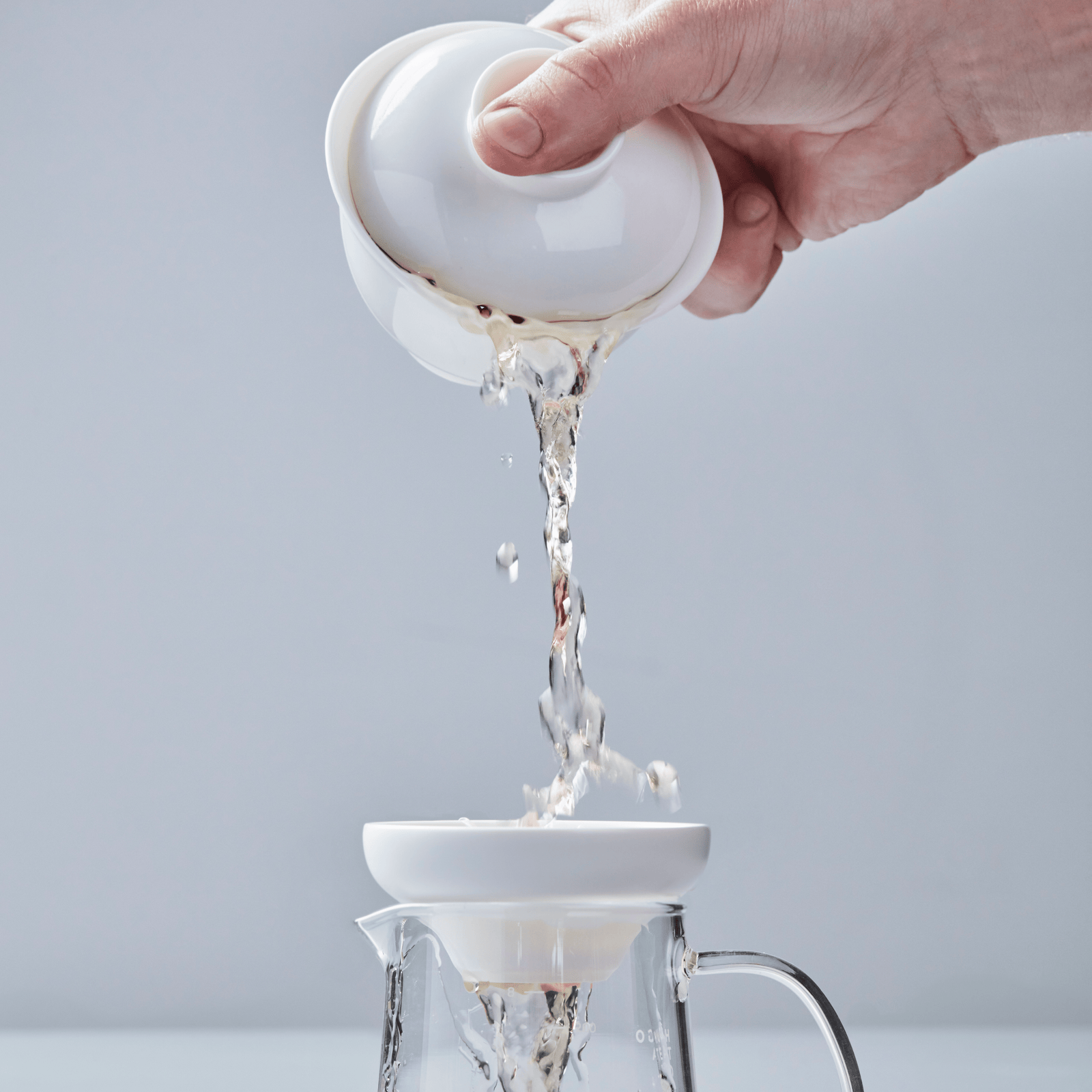
Filtered Water
Balanced mineral content enhances sweetness and texture, while reducing bitterness; avoid distilled or softened water for best results.
Every element in matcha preparation has purpose—from the shape of the bowl to the tension of the whisk. Explore our full selection of tea wares designed for daily use and mindful brewing.
How to Make Matcha (Step-by-Step Guide)
Matcha preparation is both process and rhythm. Follow these steps — precise, but simple.
Step 1: Warm the Bowl:Pour a small amount of hot water into the chawan, swirl, and discard. A warm bowl stabilizes temperature during whisking.
Step 2: Sift the Matcha:Add 1–2 chashaku (≈2 g) through a fine sieve. Sifting eliminates clumps and produces smoother foam.
Step 3: Add Water: Pour 60–80 ml of filtered water at 165 °F.
Step 4: Whisk:Hold the chasen upright. Whisk briskly in a “W” or “M” motion until a uniform layer of micro-foam appears. This suspension — not froth — defines the texture of good matcha.
Step 5: Serve:Drink immediately from the bowl. Matcha oxidizes quickly and loses aroma within minutes.
For cold variations or batching methods, see our Cold Tea guide.
Technique Notes
Matcha’s quality comes from precision and repetition, not ritual.
- Sift before whisking. Static and humidity cause clumps that resist suspension.
- Pre-soak the chasen. Soft tines move faster and won’t break under pressure.
- Use filtered water. Minerals stabilize taste and body.
- Avoid over-whisking. Large bubbles lead to bitterness.
- Store cold and airtight. Matcha degrades fast when exposed to air or light.
Matcha rewards care and immediacy — whisk, drink, repeat.
Troubleshooting Common Issues
- Bitter or Harsh Flavor → Water too hot or excess powder. Cool to 165 °F and adjust ratio.
- No Foam → Whisk too dry or damaged. Pre-soak, and replace if frayed.
- Watery or Thin → Under-dosed. Increase powder slightly.
- Dull Color → Oxidized or aged matcha; store refrigerated, sealed, and dark.
Conclusion: Matcha as Craft, Not Ceremony
Matcha is precision in its simplest form — one leaf, ground fine, suspended whole. Every variable matters: temperature, ratio, and motion.
The process is less ceremony than craft. With quality leaf and careful technique, matcha becomes clear, balanced, and deeply satisfying.
Explore our ceremonial matcha collection and tea tools to begin your next bowl.
Frequently Asked Questions About Matcha Preparation
-
Between 160 °F and 170 °F (71–77 °C). Water any hotter scorches amino acids like L-theanine, leading to bitterness and flat aroma. Cooler water won’t extract enough sweetness or umami. Let freshly boiled water rest for 1–2 minutes before whisking for the best balance.
-
Use 2 g of matcha (about one heaping chashaku) for usucha (thin matcha) and 3–4 g for koicha (thick matcha). Because matcha is fully suspended rather than steeped, the ratio directly shapes texture, body, and sweetness.
-
Sifting breaks up static clumps and aerates the powder, allowing it to disperse evenly and form a fine, stable foam. Skipping this step often leads to gritty texture and uneven flavor — a simple step with a noticeable impact on quality.
-
Bitterness usually means water that’s too hot or tea that’s too old. Temperatures above 175 °F degrade amino acids and exaggerate catechin bitterness. Always use fresh, vivid-green matcha and water around 165 °F for clean, umami-forward flavor.
-
They’re two styles of the same tea.Usucha (thin matcha) uses about 2 g matcha to 70–80 ml water, whisked to a fine foam — bright and balanced. Koicha (thick matcha) uses 3–4 g matcha to 40–60 ml water, kneaded slowly to create a dense, syrupy texture. The difference lies in ratio and preparation, not leaf variety.



